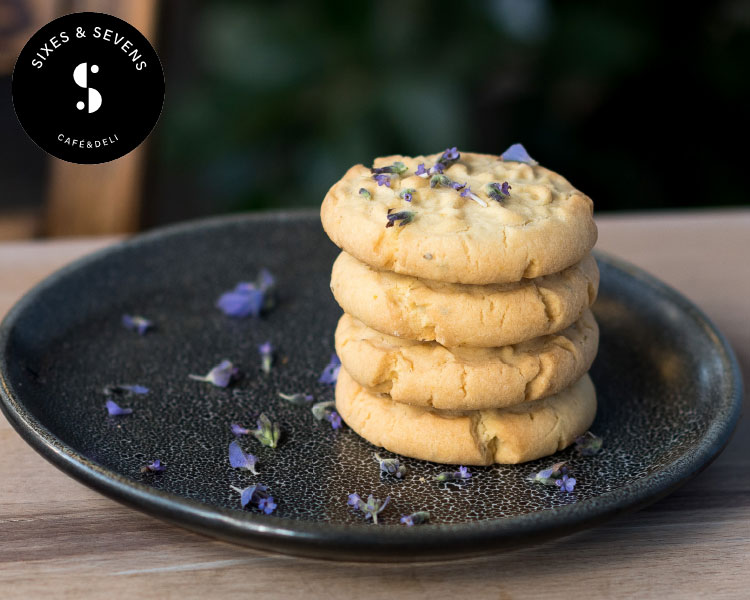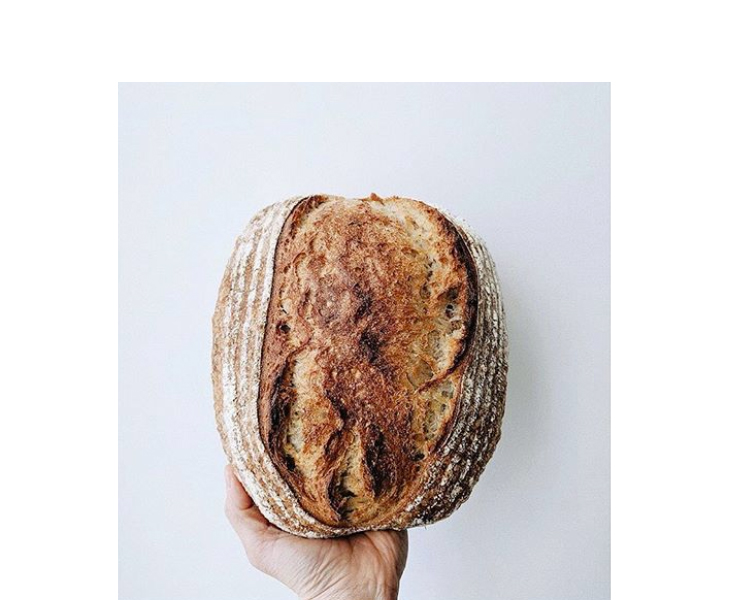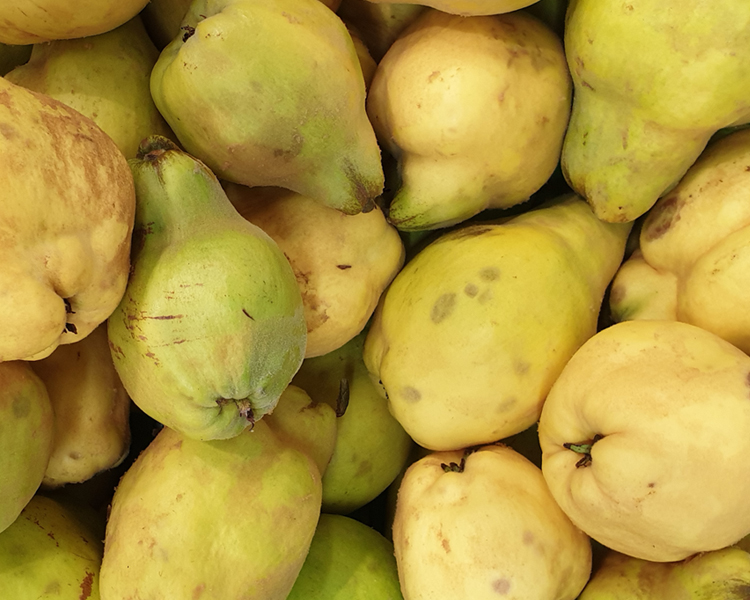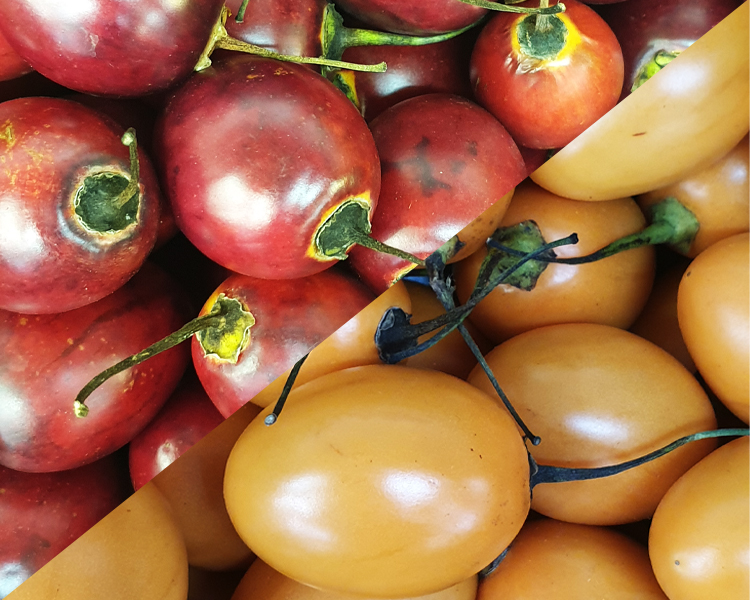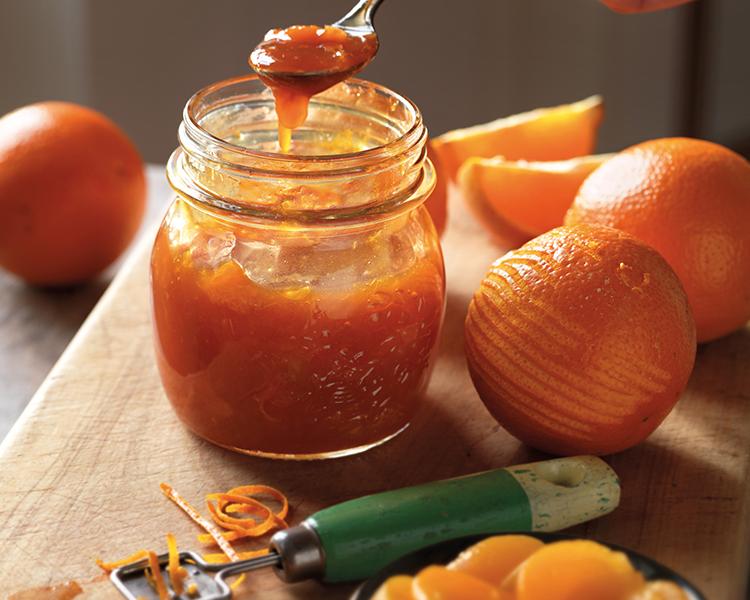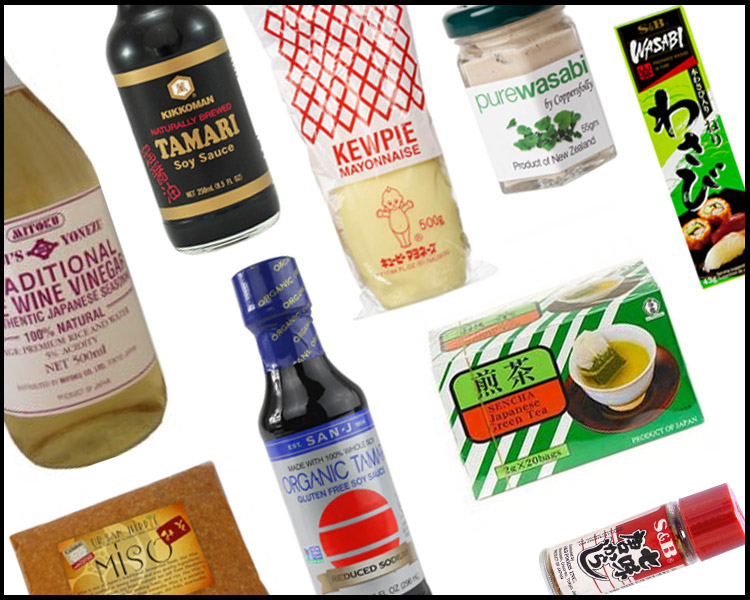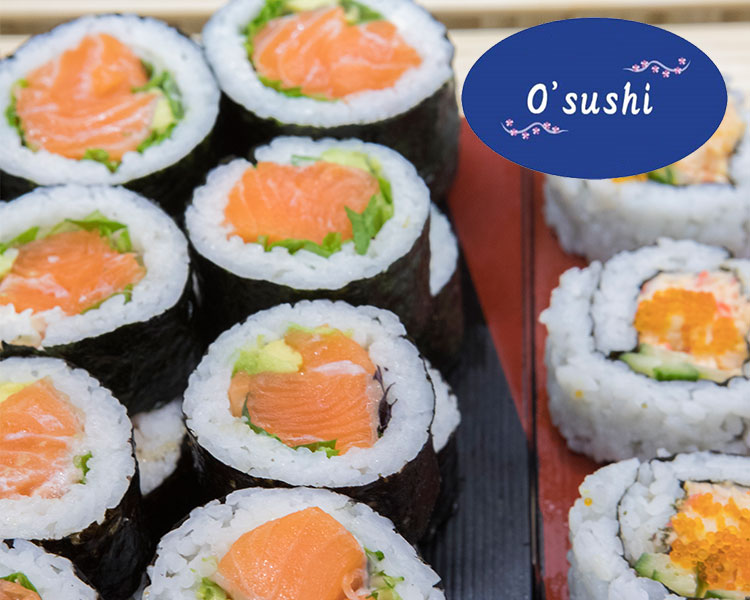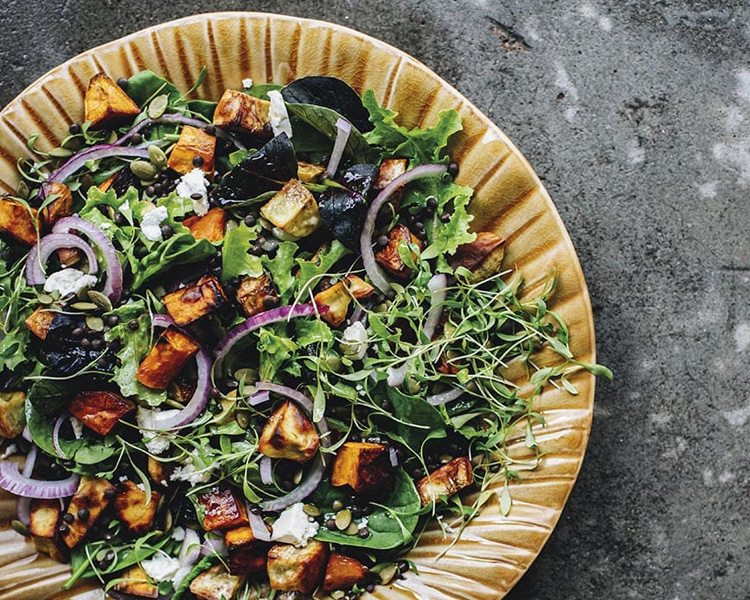With the cooler temperature setting in, warm yourself up with this deliciously spiced mulled wine.
What's Hot
-
-
 Recipe shared by Rebecca Fowler for Moore Wilson's 2020 Calendar.
Recipe shared by Rebecca Fowler for Moore Wilson's 2020 Calendar.Sixes and Sevens Deli
51 Taranaki Street
sixes.co.nz -
The Greek Food Truck took to the road in 2014 and quickly became one of Wellington’s favourite on-the-go dining experiences, bringing high quality, delicious Greek food to the Capital. Voted best food truck in Wellington 2018.
Sophie and Chef George, both first generation Greeks, love the food truck lifestyle - meeting people, mobility and freedom, and the fact that every day is different! Priding themselves on creating authentic Greek food. Thier signature dishes include a variety of meat and vegetarian Souvlaki, Salads and Greek sweets.
View full menu here.
The Greek Food Truck at Moore Wilson's Opening Hours
TORY STREET
Monday to Sunday: 11am to 3pm
Closing times subject to availability.
See all of our Lunch Menu offerings at Moore Wilson's Tory Street include the Chook Wagon
-
Sourdough is a type of bread made without commercial yeast, and instead uses a natural culture from flour and water called a ‘starter’. When flour and water are mixed lactobacilli bacteria combine with the wild, airborne yeast in the surrounding environment and that mixture ferments and produces gas. When added to bread dough, this mixture is what makes the bread rise and offers the bread a complex flavour and smell – tangy and acidic.
Sourdough bread can be traced back to Ancient Egyptian civilisations from where it gradually spread throughout Europe and the Middle East and it wasn’t until the 1800’s when it was introduced to America. Current day, many artisan bakers are experimenting with textures and flavours and producing delicious and nutritious sourdough bread.
The fermentation process of sourdough bread makes it easier to digest that standard, yeasted loaves of bread. The phytic acid in the wheat inhibits enzymes which are needed for our bodies to breakdown the proteins and starch in bread. The lactobacilli and wild yeast found in sourdough neutralise the phytic acid while the dough slowly ferments which enables us to more easily digest sourdough bread. This process also makes other nutrients available to us including calcium, magnesium, iron and zinc.
You can easily make sourdough bread at home with only a few simple ingredients – flour, water, salt and sourdough starter. Sourdough starters can be made from scratch and takes around 7-10 days. Some bakeries also offer people some of their own starter which can be used to make bread straight away.
There are many sourdough bread recipes found online as well as many recipe books. Some recommended books are:
The Tivoli Road Baker, by Michael James with Pippa James – available here
Tartine Bread, By Chad Robertson
The Sourdough School, by Vanessa Kimbell
Moore Wilson’s Fresh also stock a range of sourdough bread from local bakeries including:
-
Quince is a fruit native to Iran and Turkey and now commonly found in Europe. It is particularly popular in Middle Eastern, Spanish and French cuisine. Its appearance is similar to a pear and apple in both size and shape but a little lumpy. The colour of the skin is yellow and can sometimes have fuzz over it, while the flesh is white when raw and goes pink once cooked. Quince have a delicate vanilla, citrus, floral fragrance. They can be eaten raw but are very hard and astringent, however once cooked they soften and become delicate and sweet in flavour.
Quince are a good source of vitamins and minerals including Vitamin C, fibre, zinc, copper, iron, phosphorus and potassium.
Choose hard fruit that are green/yellow in colour and firm with no soft spots or bruises. You can store them on the bench top until their fragrance becomes quite strong or in the fridge for up to two weeks. Quince can be eaten both peeled and unpeeled. If unpeeled, rub off the fuzz and wash before cooking.
Quince can be used in a number of ways including roasting, stewed, baked and poached. They are very high in pectin which makes them great for making jelly, marmalade and jam. They are a delicious addition to sweet pies and crumbles and go well with meats such as lamb and pork. Quince are also delicious on their own as a simple dessert or with porridge or muesli.
RecipE - Poached Quince
7 cups (1.75l) water
1 cup (200g) sugar
1/2 cup (150g) honey
1 lemon, cut in half
1 vanilla bean, split lengthwise
6 large or 8 medium quince
- Mix the water, sugar, honey, lemon and vanilla bean in a large non-reactive pot and turn it on to medium-high heat. You can add any additional spices or seasonings if you wish.
- While the liquid is heating, quarter, peel, and remove the cores of the quince.
- Put the quince into the pot and cover with a lid
- Simmer the quince (do not boil) for at least an hour, until the quince are cooked through.
Cooking time will vary, depending on the quince. They’re done when they are cooked through, which you can verify by piercing one with the tip of a sharp paring knife. It’s not unusual for them to take up to 2 hours, or more.
Serve warm, or at room temperature. To store, pour the quince and their liquid into a storage container and refrigerate for up to one week. If you wish to eat only the fruit, you can save the liquid and drizzle it over ice cream or yoghurt or to flavour drinks.
-
Originally from South America, the tamarillo has thrived in New Zealand and we’ve almost adopted it as our own, even to the point of renaming it. The peak of availability in New Zealand is in July and August. Tamarillos are a relative of the potato, tomato and eggplant and are still called “tree tomatoes” in some other countries.
In NZ, tamarillos come in three varieties, red (the most common), amber and gold. Red tamarillos are great to eat raw, cooked or for decorating other food for your table - they look striking when sliced or cut in half. The amber and gold varieties are sweeter. Amber tamarillos are great as dessert toppings, while gold tamarillos make tasty chutneys and pickles.
Tamarillos rate very highly as a source of
vitamins, minerals and antioxidants when compared with other common fruits and vegetables. They are low in fat, high in potassium and are a source of Vitamin A, B6 and C.Look for fruit with full colouration. A slight yellowing of the stalk and softness of the fruit are signs of ripeness. Tamarillos will keep in the fridge for about two weeks, or one week in your fruit bowl - they can also be easily frozen. The full exotic flavour of the traditional fruit makes a great drink, snack, main course or dessert.
Uses for Tamarillos:
- Use as an ingredient in a stuffing for roast lamb
- Combine with apple in a variety of desserts such as crumble
- Serve on crackers with a sprinkling of salt
- Make a salsa with avocado, chilli and onion
- Add to casserole as you would tomatoes
- Halve tamarillos, top with garlic butter and grill
- Slice raw, peeled tamarillos and decorate flans, cakes, cheesecakes
- Pureed tamarillo makes an excellent marinade, adding flavour and tenderising meat
- Add to smoothies for a sweet and tangy breakfast or snack
RECIPES
Ginger Pork with Tamarillos and Kumara, courtesy of Lucy Corry
- 2 tbs olive oil
- 2 onions, peeled and finely chopped
- 4 cloves garlic, peeled and sliced
- 4cm piece of ginger, finely grated
- 500g diced pork
- 1/2 cup dry white wine
- 1 large kumara
- 1/4 cup water
- 4 tamarillos
- 3 handfuls of spinach leaves, roughly chopped
- Heat the oven to 150 degrees Celsius. Heat the olive oil in a large, heavy, ovenproof pot. Add the onions, garlic and ginger, along with a pinch of salt, and cook over medium heat for 5-10 minutes, until soft but not browned.
- Remove from the pot, add a drizzle more oil and raise the heat. Add the pork and brown on all sides.
- Return the onions to the pot, along with the wine. Let it bubble up, then add the kumara and water. Cover tightly and transfer to the oven. Cook for 30 minutes.
- While you're waiting, put the tamarillos in a heatproof bowl and cover with boiling water. Let stand for two minutes, then drain and peel off the skins. Slice thickly.
- When the pork has cooked for 30 minutes, add the tamarillos and spinach. Stir well and return to the oven for another 15-20 minutes. Serve with rice.
Tamarillo Dressing, courtesy of Nadia Lim
The tamarillos give that fruity tartness, like lemon, that all good dressings need. This dressing goes well with lots of different salads.
- 2 tamarillos, peeled and flesh diced
- 1/2 tsp Dijon or wholegrain mustard
- 1 1/2 tsp runny honey
- 1 1/2tbs extra-virgin olive oil
Place all ingredients into a small jar, screw on the lid and shake well to mix all ingredients together.
-
Preserving is a great way to enjoy the season’s best flavours at any time of the year. Pick what’s in ample supply (e.g. berries and stonefruit in Summer, pears in Winter) and preserve to enjoy year round.
The aim of preserving is to slow down the activity of microorganisms and enzymes or destroy them altogether. Here’s a few common methods of preserving:
Freezing - the colder the food, the slower the rate of deterioration. Freezing only slows down enzyme activity so vegetables must be blanched in boiling water first.
Heat - boiling or blanching at high temperatures destroys enzyme activity and almost all microorganisms. Boiled preserves must be sealed in airless conditions to prolong their shelf life.
Strong Concentrations - alcohol, acid, salt and sugar in high concentrations either prevent or destroy microorganisms. The method used will depend on what you’re preserving.
Essential Equipment
- Small ladle for potting all types of preserves.
- Slotted spoon for poaching and skimming
- Wooden spoon for stirring
- Tongs for removing items when heat processing
- Jam/sugar thermometer for accurate temperature taking
- Hydrometer - useful for brewing to measure the alcohol content
- Wide mouth funnel for potting up preserves
- Long spouted funnel for bottling drinks and sauces
- Cheesecloth for filtering and straining liquids
- Jelly bag for straining fruit pulp
- Muslin cloth for straining, wrapping meats or making spice bags
- Food processor to save time and effort when mixing, blitzing, mashing or pulping
- Large plastic container with drip tray for brining and curing meats
- Stainless steel preserving pan— a specialist, non-reactive, heavy based pan for rapid boiling.Containers
The right container can make all the difference when preserving. Containers must always be in good condition and steralised before use.- Clear glass bottle - used with an airtight cork these are perfect for wine, cider and cordials
(alternatively use a swing stopper bottle)
- Ice cube box for freezing small portions of herbs
- Plastic freezer containers for freezing jams, fruit, vegetables, purees and sauces.
- Jam jars for storing jams, chutneys, jellies etc. A new lid or waxed disc is essential every time.
- Corks for stopping home brews.
- Ramekin dish for potting up meat and fish or butter, cheese and jellies.
- Specialist preserving jars - heat resistant, with non-corrosive lids and replaceable seals.Ingredients
- Salt - draws out the moisture in food. Can be used for preserving vegetables, meat and fish.
- Sugar - just as effective as salt when used in high concentrations (60% +). Mostly used to preserve fruit or used with vinegar to preserve fruit and vegetable mixes such as chutneys.
- Fats - not a preserving agent but used to protect some preserved foods by forming a protective seal.
- Vinegars - prevents the growth of microorganisms. Mostly used to preserve vegetables as pickles, relishes and sauces.
- Lemons - used when making jams. Adding lemon draws out the pectin, helping the mixture set.
- Spices and flavourings - enhances flavour of preserves and can even actively help the preserving process.Check out our selection of preserving books, tools and equipment available online for delivery nationwide or visit our Variety Departments for the full range.
Featured image: Apricot Tangelo Marmalata from Rowan Bishop 'With Relish'. Photograph by Carolyn Robertson.
-
Wedding Gifts and Exchanges
They say the kitchen is the heart of the home and in our Kitchen & Homeware Departments you’ll find premium cookware, small appliances, crockery, glassware, cutlery, kitchenware, cookbooks, and more. We’ve also got a great range of manchester, bathroom accessories, luggage and giftware.
Our philosophy is to stock quality brands and products and offer them to our customers at everyday low prices. This means you and your guests can be sure you’re getting the very best value.
Cheese Wedding Cakes
Cheese Cakes (cakes made with rounds of cheese) have become extremely popular and the cheese experts in our Tory Street Fresh Market can help you plan a beautiful cake using rounds of quality New Zealand and imported cheese. Cheese cakes can be an alternative to the classic wedding cake or enjoyed after the meal – either way they make a unique feature for your celebration!
Wine, Beer & Spirits
For all those toasts on and around your special day! Our Tory Street, Porirua and Masterton Wine, Beer & Spirits Departments stock a wide range from Champagnes to great value wines and beers to suit any budget. Our staff will also be happy to help with recommendations and advise on what quantities you'd need for your special event. You can also ask our staff about our sale or return policy for functions.
To find out more about any of the above services please visit us in-store.
-
While sushi may be what initially comes to mind, there is a lot more to Japanese cuisine than this popular dish. Did you know, as of 2019 Tokyo is the city with the most Michelin star restaurants, with a total of 230 restaurants!
Traditional Japanese cooking, or washoku, is based on “rules of five,” which emphasizes variety and balance. This is achieved through the use of five colours (black, white, red, yellow, and green), five cooking techniques (raw food, grilling, steaming, boiling, and frying), and five flavours (sweet, spicy, salty, sour, and bitter).
Along with all your sushi-making essentials, Moore Wilson’s Fresh is home to a great range of Japanese pantry basics so you can bring the wonderful flavours of Japan to life in your own home.
Kewpie Mayonnnaise: Regarded as the best mayonnaise in the world. Made from egg yolks only rather the whole eggs plus rice vinegar, soy based vegetable oil and a touch of the flavour enhancer MSG.
Bonito Fish Flakes: Bonito flakes, also known as katsuobushi, are little wisps of dried, fermented bonito, used in Japanese cooking to for their smoky, intensely savoury, slightly fishy flavour. The flavour is somewhere in between anchovies and bacon, but much more delicate than either one. Bonito flakes, along with kombu, are one of the primary ingredients in dashi - a savoury stock that is
ubiquitous in Japanese cooking - but they can be thrown in or on any dish that needs a boost in the savoury department.Nori Sea Salt: Made by Wellington’s Asian Food Republic, this seasoning can be sprinkled over cooked chicken, pork or seafood as a vibrant garnish and extra flavour. Also great on cooked rice and Asian soups.
Soba, Ramen and Udon: Although not made in Japan, our range of Japaenese noodles are an essential base for many dishes including soups, salads, stir-fries and ramen broths.
Yuzu Extract: Yuzu is a sour Japanese citrus fruit, used both for its juice and its aromatic rind. The yuzu has an aroma and flavour that is distinct from any other citrus fruit, somewhat akin to a cross between grapefruit and lime. This rare fruit is used in authentic Japanese cooking, common in seasoning meat, seafood dishes, sweets and beverages.
Tamari Soy Sauce: A thicker, less salty, fermented soy sauce that contains less wheat than regular soy sauce (or look out for San-J Organic Tamari for a completely gluten-free option). Tamari adds a full, savoury, umami flavour to your dishes.
Miso: A traditional Japanese paste made from fermented soy beans. These are numerous types and textures available. Provides an intense almost meaty savoury flavour. As a general rule, the lighter the Miso colour the more mild the flavour. You’ll find a great range of imported miso as well as a New Zealand-made Miso from Nelson’s Urban Hippie. Urban Hippie have also produced a Misomite which can be enjoyed on toast or as part of a dip, dressing, or marinade.
Nanami Togarashi: Nanami literally means seven flavours’ in Japanese. This tasty spice blend is made up of chilli pepper, orange peel, black and white sesame seeds, Japanese Pepper, Ginger and Seaweed. A NZ Togarashi is also available from Kaituna Farms which includes NZ horopito and kawakawa. Sprinkle or rub on meat, fish and vegetables or add to pasta and rice dishes.
Rice Wine Vinegar: Made by fermenting the sugars in rice first into alcohol, and then into acid. Compared to white distilled vinegar, rice vinegar is less acidic with a delicate, mild, and somewhat sweet flavour. A pale yellow colour it is used as sushi vinegar and in making pickles.
Wasabi: This Japanese horseradish tastes very peppery and pungent. Moore Wilson's stocks fresh wasabi, along with the more common paste and powdered form.
Sencha Japanese Green Tea: The most popular green tea in Japan, favoured for it’s smooth taste and refreshing finish. Available in a convenient box of teabags.
Matcha: T Leaf T’s Matcha is produced by grinding tea leaves into powder. Produced in Uji-shi Kyoto prefecture Japan, this matcha not only tastes delicious it is said to be high in antioxidants and vitamins.
-
Located at both Moore Wilson's Wellington and Porirua, the unique O'Sushi kiosks have been designed by Miramar's Human Dynamo Workshop. Human Dymano were also the creative force behind Moore Wilson's Tory Street Chook Wagon, a replica of the iconic 1947 Citroen H series light truck, and Porirua's nautical Wine, Beer & Spirits Store.
O'Sushi opened in 2013 in Tory Street and is housed in a bright red replica of an early 1900’s Te Aro villa, a nod to the rich history of the area. At Porirua, a painting of Mana Island provides a stunning façade for the hole-in-the-wall food kiosk, which was added to the store in November 2017.
O'Sushi is run by Miki Wee, owner of Newtown’s popular O’Sushi. Miki is an experienced sushi maker and uses only the best, freshest ingredients in her sushi, made onsite daily.
Some O'Sushi favourites include Japanese-Style Sashimi, Maki, Vegetarian Tempura, California Rolls, and Teriyaki Salmon over Rice. Miki also offers pork buns, dumplings, and miso soup.
O'Sushi at Moore Wilson's Opening Hours
TORY STREET
Monday to Saturday: 9am to 4pm
Sunday: 9.30am to 3.30pmPORIRUA
Monday to Friday: 8.30am to 4.00pm
Saturday: 9.30am to 2.30pm
Sunday: ClosedClosing times subject to availability.
See all of our Lunch Menu offerings at Moore Wilson's Tory Street include the Chook Wagon


